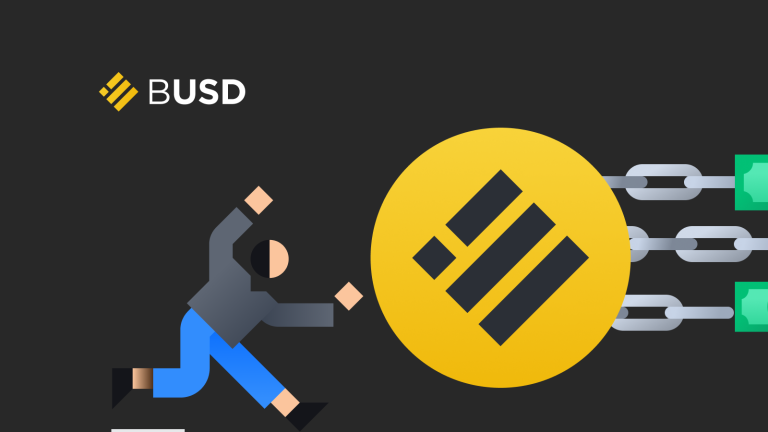
What is BUSD? Recently, there have been many questions about the safety and soundness of products in the crypto space. There have been many questions about stablecoins in general, so this piece is intended as an explanation of BUSD.
First and foremost, BUSD is a stablecoin pegged to the US Dollar (USD) which came from a partnership between Binance and Paxos. BUSD is issued by Paxos Trust Company, an NYDFS-regulated entity, on the Ethereum blockchain.
This regulated status comes with some conditions attached which restrict the actions that Paxos is allowed to undertake. This is in addition to the NYDFS having the authority to evaluate Paxos’ operations and oversee the stablecoin.
BUSD is designed with three important areas in mind: high quality reserves, audits, and regulation. Here are some of the key principles behind how BUSD is run, spelled out in simple terms:
BUSD Reserves Are for Token Holders
The reserves do not belong to Paxos, nor to Binance. They are, instead, for the benefit of the holders of BUSD. This means that Paxos does not own the principal within the BUSD reserve, does not commingle it with corporate funds, does not have the ability to use these funds for other purposes, and must be able to clearly identify and segregate the reserve at all times.
In short, it has to be kept separate and safe. In the case of a bankruptcy of Paxos, the reserves are intended to be for the benefit of the BUSD holders, not the creditors of Paxos.
Paxos also uses major financial markets custodians to hold the securities within the BUSD reserve, meaning even if everyone at Paxos were to cease to exist, those securities and the dollars on deposit at banks are still identifiable and retrievable for the benefit of the token holders. Even in the unlikely event of this occurring, the assets are safe and secure, and another entity will be appointed to unwind the reserves and return the money to the BUSD holders.
Prudent Management of BUSD Reserves
BUSD is a US Dollar stablecoin, and Paxos and Binance take the view that BUSD itself should be as close to the representation of a dollar on the blockchain as possible. What this means is that the reserves of BUSD are kept extremely conservative, in the types of instruments that performed well even in the financial crisis of 2008. Additionally, beyond just Paxos’ preference, NYDFS rules and regulations prevent Paxos from investing the reserves in a more aggressive fashion beyond the assets listed here.
So what is in reserve, exactly? The following:
- US Treasury Bills of 3m or less maturity. T-Bills are obligations of the US government itself, backed by the full faith and credit of the United States. So far, the US government has never defaulted on its obligations. Equally important, by keeping the maturity of the instruments very low, even large moves in interest rates have little to no impact on the value of the T-Bills themselves.
- Overnight Reverse Repo, which is an overly complicated way of saying short-term fully collateralized loans. ON Reverse Repo is as follows in an economic substance: Paxos has cash in reserve. Paxos lends that cashout, on an overnight basis, to a creditworthy bank. However, banks, even good ones, sometimes fail. To provide additional safety, Paxos also holds collateral provided by the borrower in the form of US Treasuries with a value greater than the loan, and if the loan counterparty fails, Paxos can liquidate the treasuries to recover the funds.
- Bank deposits. These are exactly what they sound like: dollars on deposit at banks. There are two varieties of these in the BUSD reserve. The first is amounts at the custodian banks that hold securities for Paxos, as sometimes those securities mature and need to be re-invested, or pay coupons or other interest. The second is amounts at banks that run fast payments networks, which facilitates the ability of Paxos to provide 24/7 mint and burn services for the stablecoin, as traditional banking and securities markets are only open about 25% of the time (on an hours basis weekly) while the stablecoin operates 100% of the time. For the latter, Paxos also purchases private market insurance on deposits in the case of a bank failure.
That’s it! No other stuff is allowed to be in the reserves. There are also a couple of other restrictions on investment to keep the reserve as safe as is reasonably possible:
- No leverage. Paxos cannot borrow against the securities, and further invest them, or otherwise expand the balance sheet to increase risk.
- No credit risky instruments (except as noted with the bank deposits above). Paxos can invest only in the list above, so cannot own commercial paper, corporate bonds, or other.
BUSD Reserves are Transparent
When you own a stablecoin, you should know what is in it. Paxos discloses the stablecoins reserves on a monthly basis, allowing anyone to verify that BUSD is 100% backed by cash or cash equivalents.
Firstly, Paxos produces an unaudited monthly reserves within five business days after the month’s end. The prompt release of information to the public allows all token holders to have immediate knowledge of the current investments.
Second is the attestation, wherein an auditor reviews the Paxos holdings and provides an attestation as to the accuracy, completeness, and fairness of the disclosures (now, including a review of the unaudited holdings). The examination is conducted in accordance with attestation standards established by the American Institute of Certified Public Accountants.
In short, BUSD is conservatively invested, bankruptcy remote, transparent, and, from a financial product perspective, pretty boring. This is a feature, not a bug, as in times of uncertainty, simplicity and transparency matter more than when times are good, and all prices are rising. BUSD is built to be as resilient as possible in the downturn.
This is a sponsored post. Learn how to reach our audience here. Read disclaimer below.















